Abstract
Tritium-labeled gibberellin A20 ([3H]GA20) was applied via the pedicel to immature pods and seeds of dwarf peas and three harvests were made at days 5, 10, and 23 (mature) after application. Of the five metabolites of [3H]GA20, the three in highest yield were GA29, an α,β-unsaturated ketone, and a compound (B), whose structure was only tentatively assigned. The metabolic sequence GA20 → GA29 → compound B → the ketone was indicated. The amount of [3H]GA29 in both seeds and pods was highest at day 5 and declined to its lowest level at maturity. The amount of the [3H]ketone in the seed increased with time to its highest level at maturity. It is suggested that compound B and the ketone represent the major pathway of catabolism of GA29, a 2β-hydroxylated GA of low biological activity, and that the ketone is not metabolized, or only slowly metabolized, during seed maturation.
Full text
PDF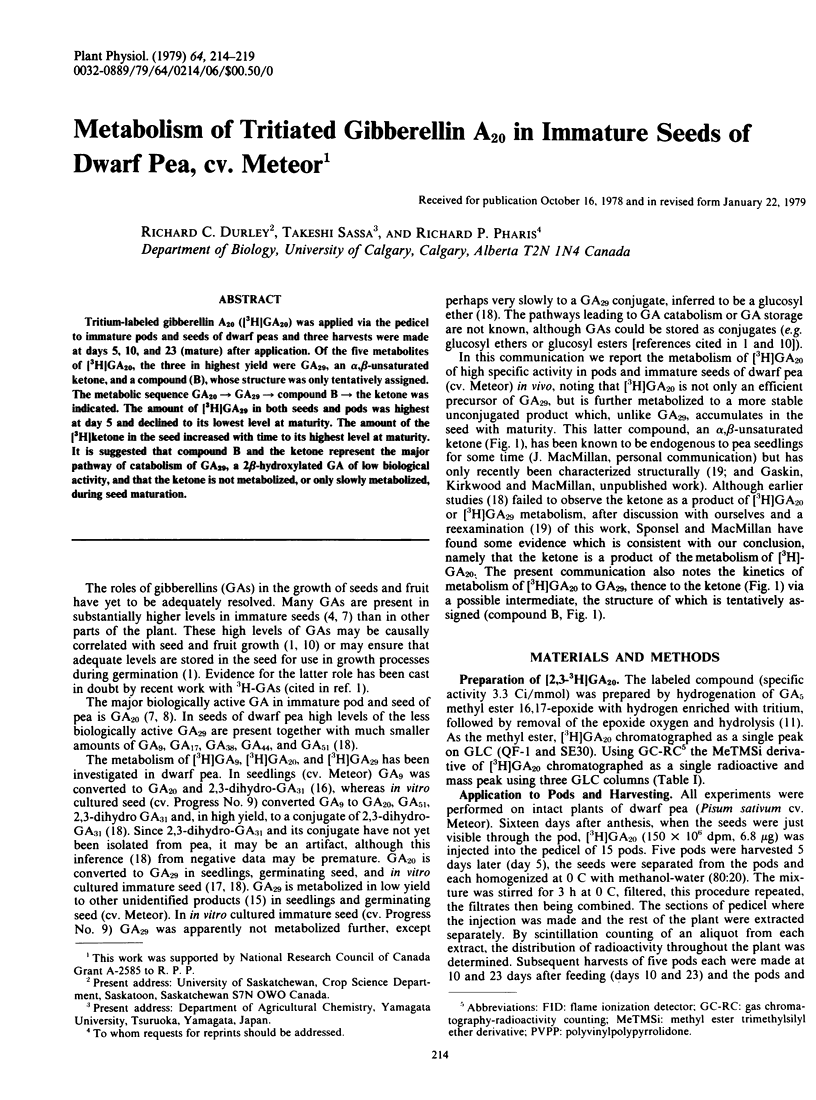
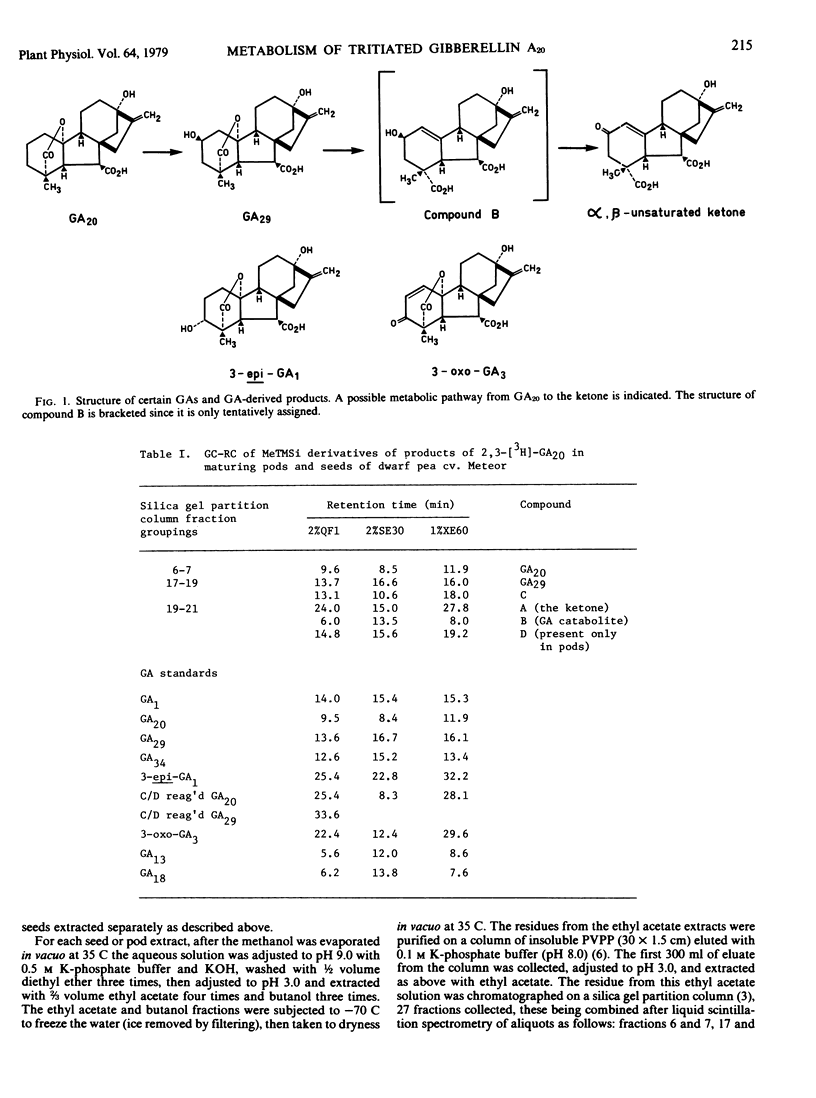
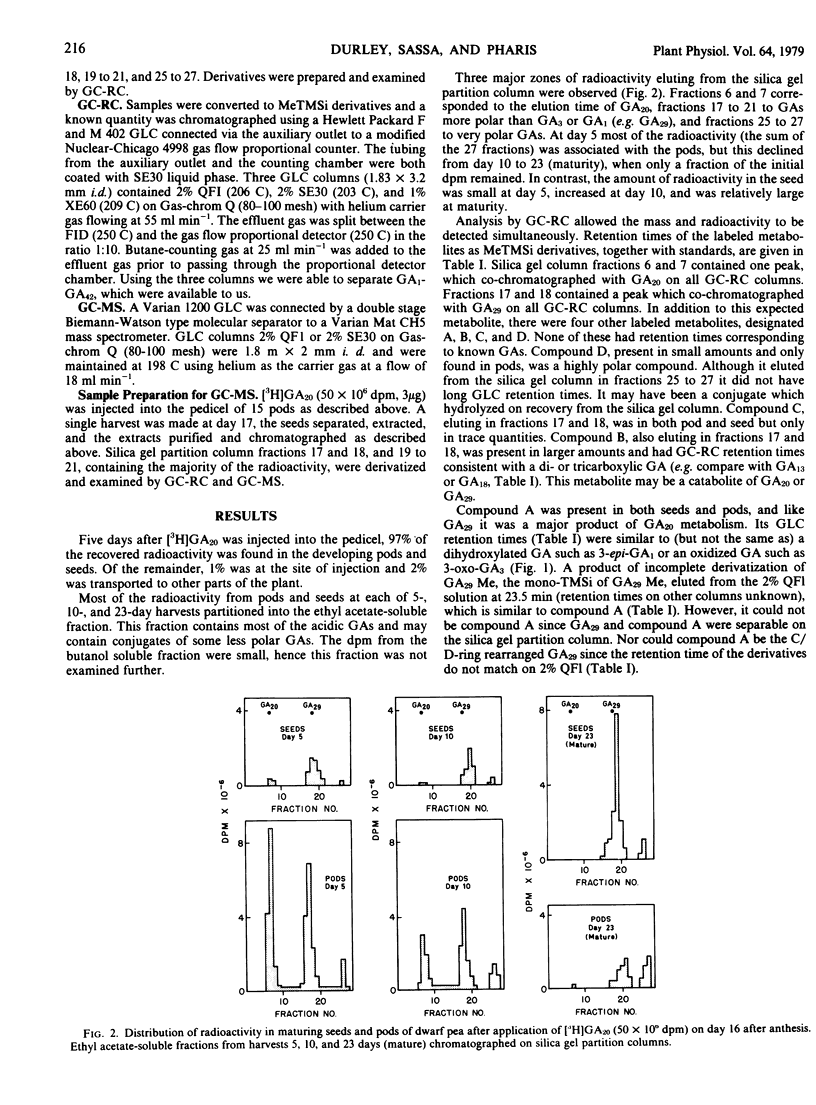
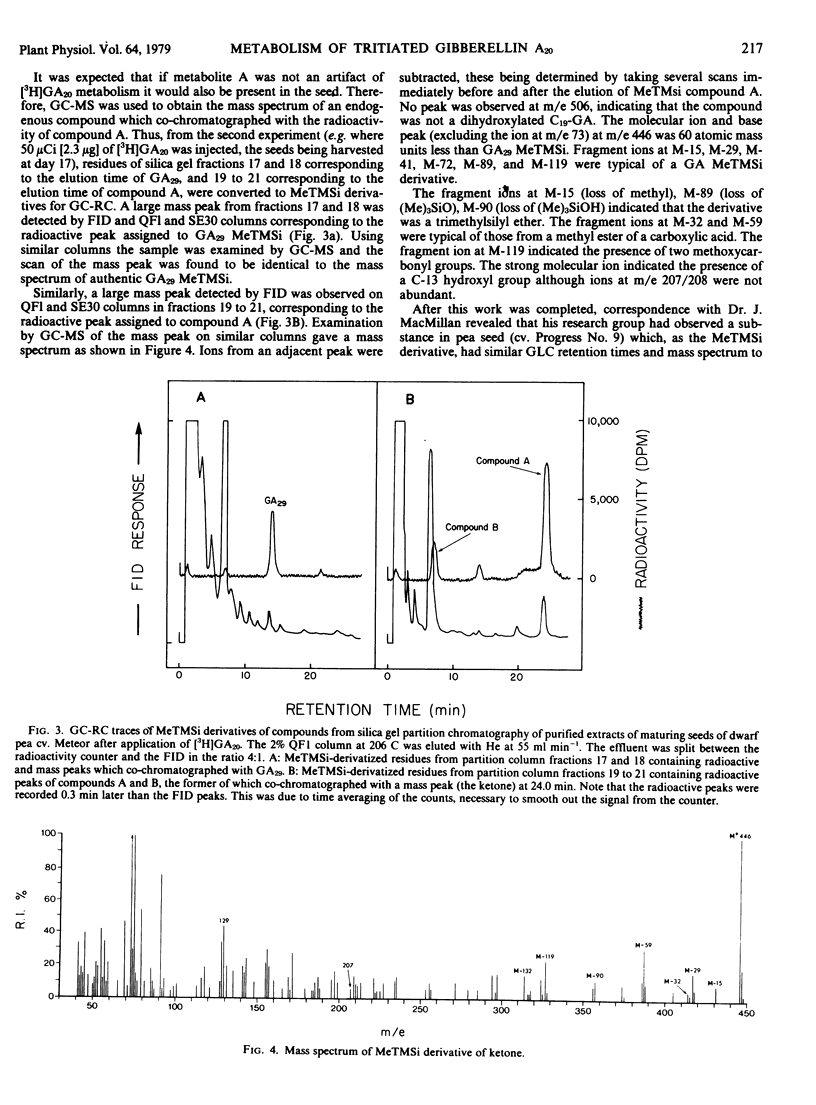
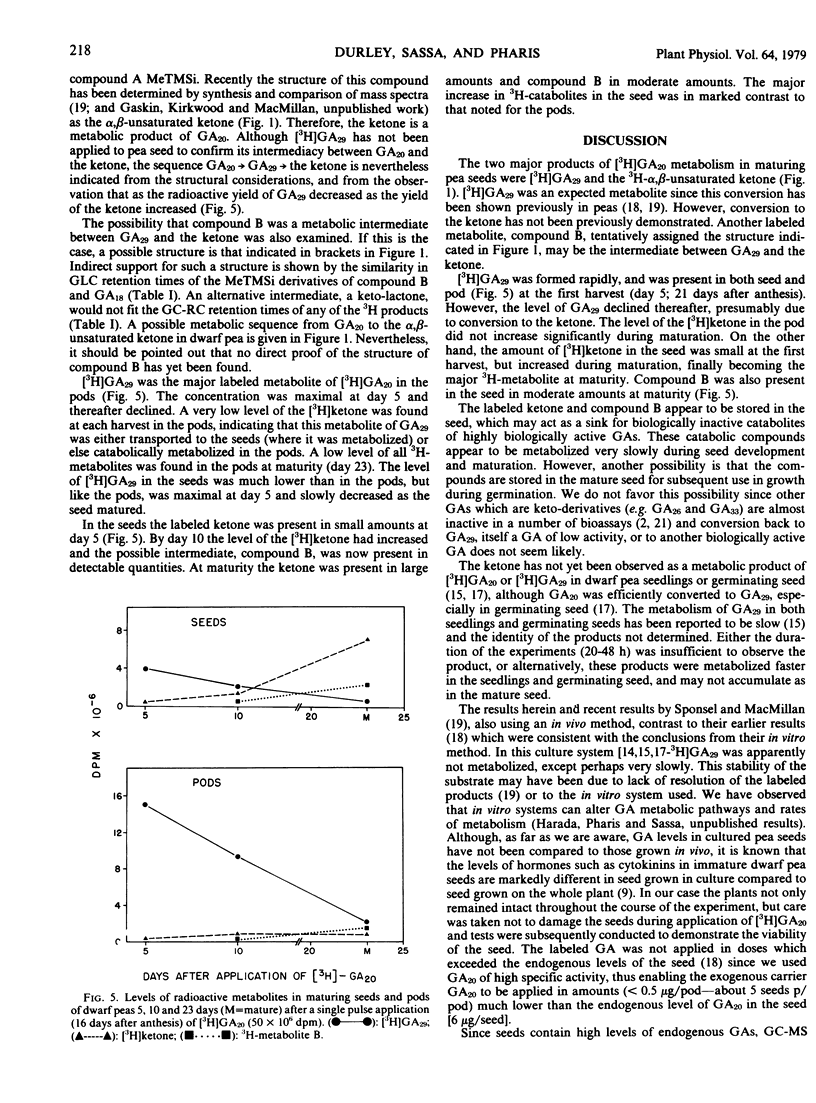
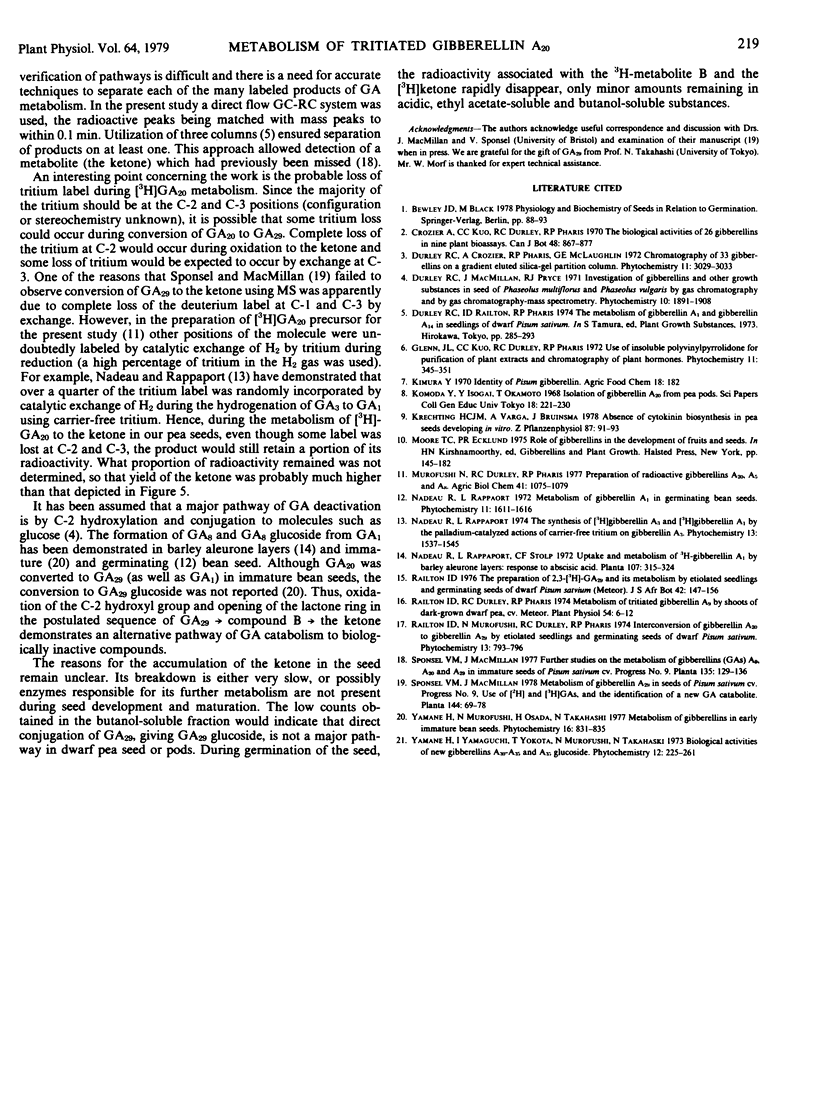
Selected References
These references are in PubMed. This may not be the complete list of references from this article.
- Railton I. D., Durley R. C., Pharis R. P. Metabolism of Tritiated Gibberellin A(9) by Shoots of Dark-grown Dwarf Pea, cv. Meteor. Plant Physiol. 1974 Jul;54(1):6–12. doi: 10.1104/pp.54.1.6. [DOI] [PMC free article] [PubMed] [Google Scholar]


